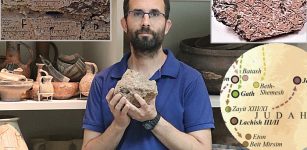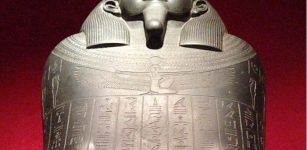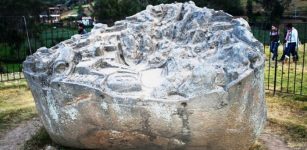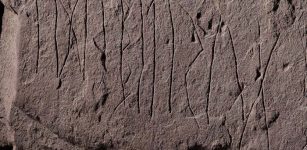Mysterious Mustatils- Giant 7,000-Year-Old Stone Monuments In Saudi Arabia Baffle Scientists
Jan Bartek - AncientPages.com - Thousands of years before the Egyptian pyramids, Stonehenge, and the Maltese temples were built, people of Arabia constructed the mustatils.
The mustatils are giant stone monuments that are about 7,000-year- old. The Arabic name ‘mustatils,’ means rectangle.
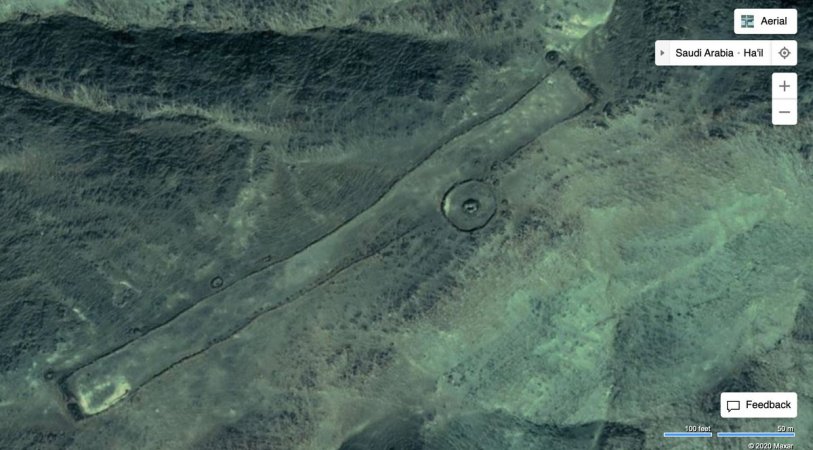
Satellite image of a mustali in Saudi Arabia. Credit: Dr Huw Groucutt
The purpose of these mysterious structures is unknown, but there are some theories attempting to explain what promoted the sudden construction of these enigmatic stone structures.
Hundreds Of Mustalis Were Constructed In The Arabian Desert
Archaeologists have hundreds of mustalis in the Arabian Desert. These vast structures made of stone piled into rectangles, are some of the oldest large-scale structures in the world. What is interesting about these giant monuments is that they only occur in northwest Saudi Arabia.
Mustalis were previously recognized from satellite imagery and as they were often covered by younger structures, it had been speculated that they might be ancient, perhaps extending back to the Neolithic.
Recent studies reveal new, interesting information that may shed light on the purpose of these massive stone monuments.
Dr. Huw Groucutt from the Max Planck Institutes for Chemical Ecology, the Science of Human History, and Biogeochemistry conducted together with an international team a thorough study of these enigmatic stone structures.
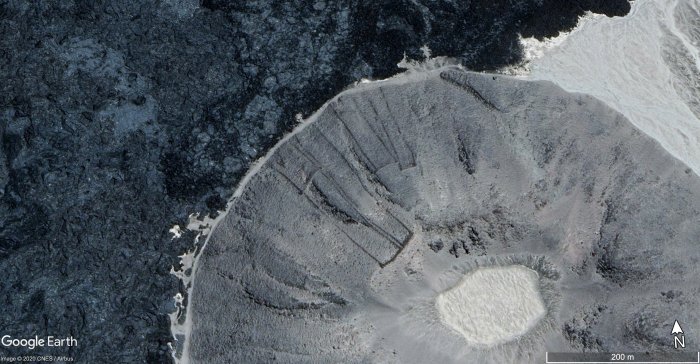
Several mustalis visible on Google Earth. Credit: Dr. Huw Groucutt
So far the science team has identified more than one hundred new mustatils have been identified around the southern margins of the Nefud Desert, between the cities of Ha’il and Tayma, joining the hundreds previously identified from studies of Google Earth imagery, particularly in the Khaybar area.
The researchers found that these structures typically consist of two large platforms, connected by parallel long walls, sometimes extending over 600 meters in length. The long walls are very low, had no obvious openings and are located in diverse landscape settings. It is also interesting that little in the way of other archaeology – such as stone tools – was found around the mustatils.
What Was The Purpose Of The Giant Mustalis?
No one can say with certainty why people built the mustalis thousands of years ago, but considering the monuments have been found in such large numbers, the structures must have been important to people in the Arabian Desert.
Were the mustalis animal shelter, ritual sites or did they serve a completely unknown purpose we simply cannot figure out?
At one mustalis, Dr. Huw Groucutt and his team found animal bones, which included both wild animals and possibly domestic cattle, although it is possible that the latter are wild auroch. At another mustatil the team found a rock with a geometric pattern painted onto it.
Based on the archaeological discoveries so far, scientists suggest mustlais were ritual sites, where groups of people met to perform some kind of currently unknown social activities.
The fact that sometimes several of the structures were built right next to each other may suggest that the very act of their construction was a kind of social bonding exercise. Northern Arabia 7,000 years ago was very different to today. Rainfall was higher, so much of the area was covered by grassland and there were scattered lakes. Pastoralist groups thrived in this environment, yet it would have been a challenging place to live, with droughts a constant risk.
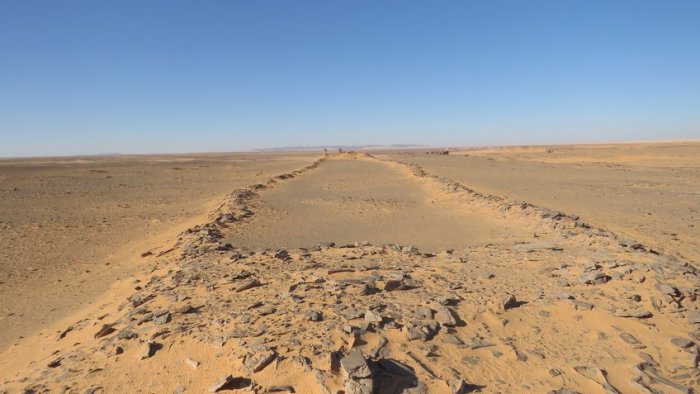
View along the length of a mustatil structure, note researchers at far end for scale, image shows character of these structures as two platforms connected by low walls. Credit: Dr. Huw Groucutt
The team's hypothesis is that mustatils were built as a social mechanism to live in this challenging landscape. They may not be the oldest buildings in the world, but they are on a uniquely large scale for this early period, more than two thousand years before pyramids began to be constructed in Egypt.
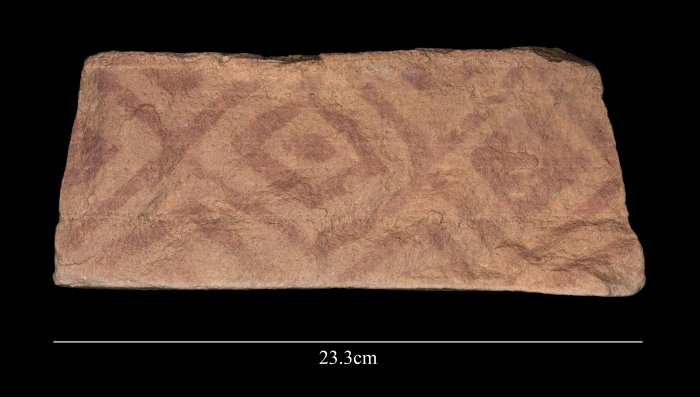
"An interesting feature of these structures is that despite very high visibility (i.e. often directly on bedrock), we observed few artefacts around them, but we did find this beautiful painted rock in the platform of one mustatil," Dr. Huw Groucutt said.
"Mustatils offer remarkable insights into human societies in Arabia in the last 'Green Arabia' phase. We look forward to conducting more research on these structures, with our various international and Saudi collaborators. Plus other teams are also working on mustatils," Dr. Huw Groucutt said on Twitter.
He also added saying, "the 104 mustatils in the southern Nefud alone - which aware from the epicenter of this structural form, in areas like Harrat Khaybar - contain around 30 km of walls and involved the moving of millions of kilograms of rocks. Mustatils are not the oldest stone structures in the world. They are a few thousand years younger than Göbekli Tepe. But they are one of the earliest forms of widespread large-scale monumental construction, with hundreds built within one region of Arabia."
See also: More Archaeology News
In Arabia, many ancient structures have received little attention, and therefore, megalithic structures of the region remain largely unknown. Recently, scientists discovered a 35-meter-long stone platform dated to 6,000 B.C. Such intriguing archaeological discoveries give us reason to say the Arabian Desert still holds many ancient secrets waiting to be revealed.
Written by Jan Bartek - AncientPages.com Staff Writer


